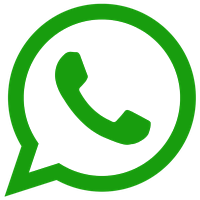
Leveraging Technology for Personalized Learning in CBSE Classrooms
Schools are experimenting with technology to provide personalized learning experiences to students. They are developing multimedia technology including text, images, audio, video, and interactive technology to customize the educational content according to the individual needs of students. You can take the example of the top schools in Raj Nagar Extension that are spearheading the revolution in the education system.
Popular technologies used for personalized learning experience
1. Interactive Learning Platforms
Online learning platforms have revolutionized the entire education system with their functions and features. The first thing is content delivery and here they are much ahead of others. They deliver multimedia content interactively and engagingly. Also, they allow students to learn at their own pace, review a variety of content, and actively engage with the material.
2. Video Based Learning
Video content is more engaging than text, audio, maps, and graphics. Also, it allows personalization in the form of video lectures, demonstrations, problem-solving, and tutorials explaining specific topics and concepts. In this way, teachers can create personalized content for students and give them a personalized experience of learning. Also, video content facilitates interaction through comments and discussions.
3. Gamification
Game elements and mechanics are integrated into the learning process to provide a personalized experience to students. The multimedia technologies used in gamification include Virtual Reality (VR) and Augmented Reality (AR). The objective is to take learners to a different world where they get involved with the technology. It is best used for critical thinking, promoting active engagement, and providing motivation. The best schools in Ghaziabad have already started using gamification for personalized learning.
4. Adaptive Learning Systems
These are little advanced learning systems as they personalize content according to the history, preference, and learning styles of learners. In other words, they notice the behavior of learners and personalized the content according to their findings. In this way, it helps students further personalize their experience. Adaptive learning systems provide freedom from unwanted and unnecessary suggestions. Also, they save time.
5. Mobile Learning
Mobile devices need little introduction as they are already popular as interactive platforms. Also, they can be used for delivering educational content including videos, podcasts, and apps. Mobile applications can even be used to provide online learning experiences to learners. Another advantage of the mobile platform is it can be used for storing videos and other content for future learning.
6. Personalize Assessment
Mobile technology can be used to provide personalized assessment. Teachers can assess the knowledge and skills of students and record their feedback and assessment. Teachers can give instructions in feedback. Students can save the feedback and assessments for future use. In this way, educators can give personalized learning experiences to students.
7. Collaborative Multimedia Platforms
These platforms provide an opportunity to collaborate with fellow students while enhancing your learning experience. These platforms promote effective collaboration and exchange of ideas. They help in communication and starting a healthy competition. The good thing is the top schools in Raj Nagar Extension have already started working on this concept.
